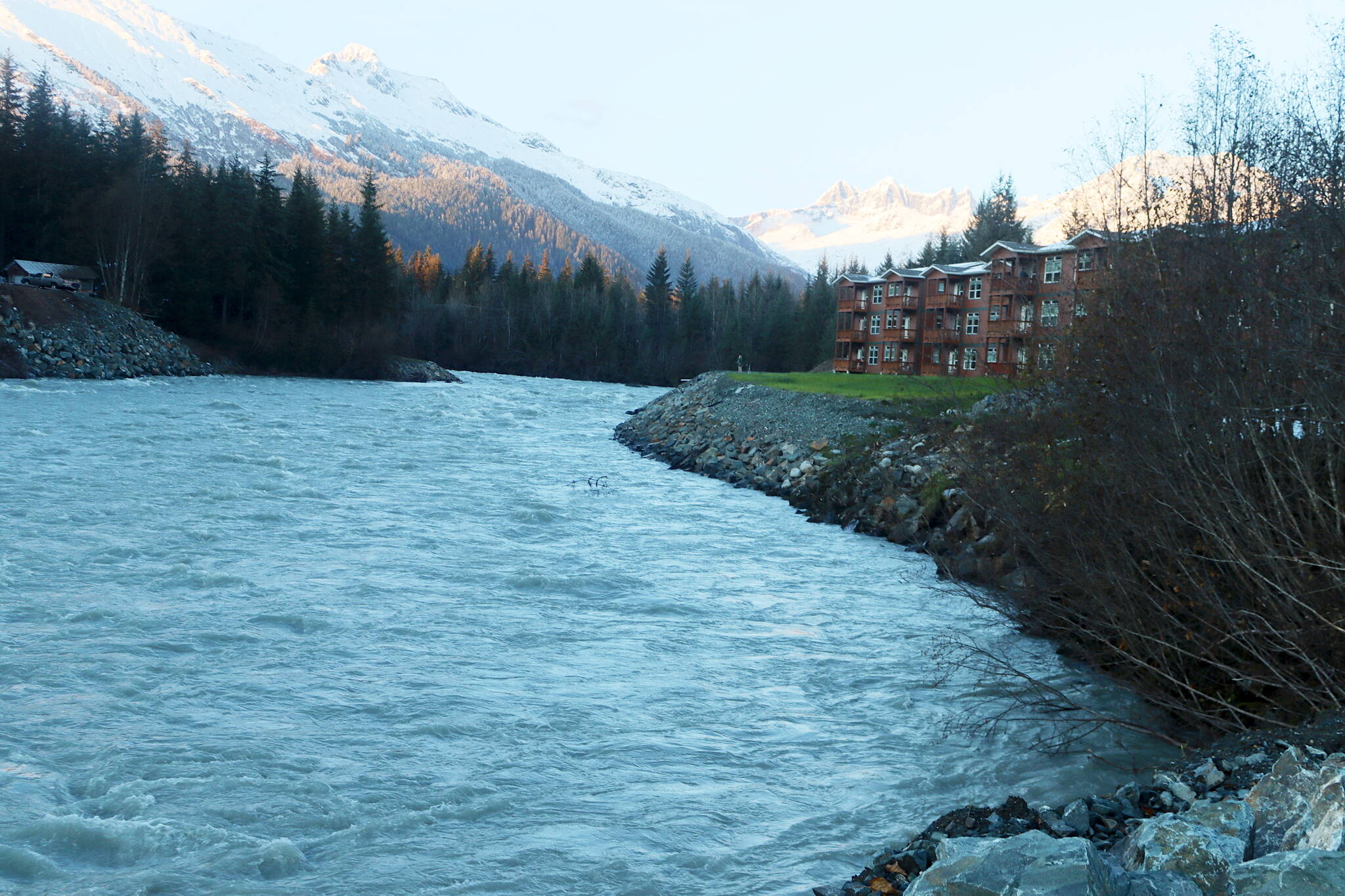This is a developing story.
The flood risk from Suicide Basin when warmer weather returns next year won’t necessarily be lower following the unseasonably late glacial outburst flood that crested Sunday night due to the multitude of factors that can affect the basin’s water level, a National Weather Service Juneau official said Monday.
The rapid buildup of water in the basin following record flooding that peaked Aug. 6 caused two distinct worries among Juneau residents and officials: a large-scale flood this fall, or one next May or June due to thawing of the ice dam.
Some residents said during the weekend they hoped the flood that just occurred means next year’s risk will be less, especially during the spring, but NWS Juneau Meteorologist Andrew Park cautioned against such thinking.
“I think that’s a dangerous assumption because we don’t have all the information that next year can happen,” he said. “There could be really warm events. We just don’t know. And so the only thing that we can do is (say) ‘Yes, the basin’s empty now, that’s helpful,’ but we can’t say with certainty that next August is going to be chill. I would stay away from that.”
Annual glacial outburst floods from Suicide Basin have occurred since 2011, but the record flooding during the past two years that has damaged hundreds of homes is likely to continue in future years due in part to warmer and wetter weather from climate change, according to experts studying the area since last year’s major flood.
An intensive and collaborative effort toward short- and long-term flood protection measures is occurring among local, state, tribal and federal entities. The Juneau Assembly is scheduled to discuss many of those, as well as potential help available due to a recent federal disaster declaration for the Aug. 6 flood, during its meeting Monday night at 7 p.m. at City Hall.
Short-term measures, according to a memo prepared for Assembly members by City Manager Katie Koester and other top administrative staff, include 75,000 sandbags that were distributed to residents during the weekend provided by the U.S. Army Corps of Engineers. The federal agency also is providing up to 25,000 linear feet of Hesco barriers to build a semi-permanent levee along four miles of the Mendenhall River until a more permanent solution is in place.
“In general, most homeowners were favorable to the concept of Hesco barrier installation to protect their and others’ property,” the memo states after surveying residents with homes along the river. “Bank stability is a significant concern over approximately two-thirds of the properties visited and engaging with the Army Corps for technical advice and assistance prior to barrier installation is a key next step. In addition, of the 79 parcels, 3 lack sufficient space for the HESCO barriers and major bank work would need to be done and 16 have significant obstructions that will be difficult and costly to address.”
Cost is also a major issue, with options ranging from the city paying all site preparation costs to property owners being largely responsible — and the city billing owners who refuse to do the work if the city has to. The memo recommends a mid-range option where “CBJ pays for a portion of the cost (of) all site preparation.”
“Paying for a percentage of the total project cost provides relief to all property owners and incentives homeowners to do their own small projects for site preparation,” the memo states.
Long-term measures will be evaluated in part through a multiyear study expected to cost $6 million, with the Assembly already approving $3 million to match a similar amount from the Corps of Engineers. Among the possible long-term projects are a drainage tunnel through a mountain or a levee along Mendenhall Lake and/or Mendenhall River.
• Contact Mark Sabbatini at mark.sabbatini@juneauempire.com or (907) 957-2306.

